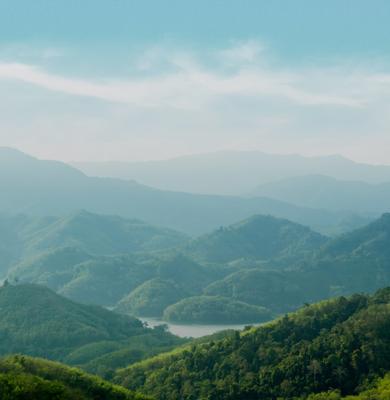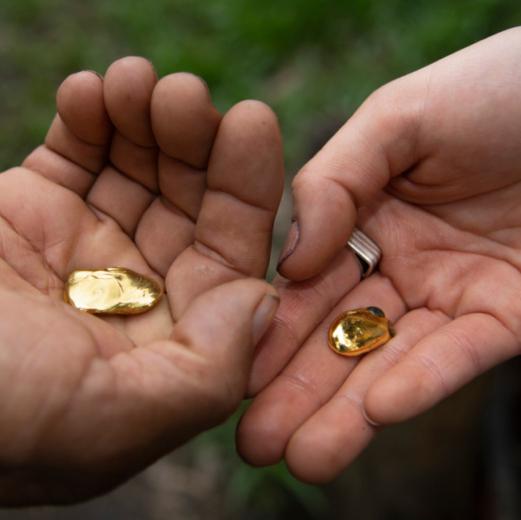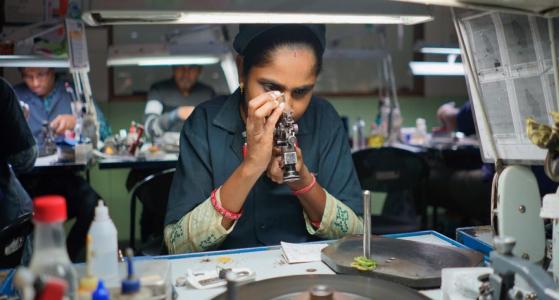Have a question?
We're happy to help


Sustainability
We've led the jewelry industry in sustainable practices since we were founded in 2005.
We use recycled and sustainable materials, apply energy-efficient practices, and minimize our carbon footprint. We've set ambitious goals to protect the planet, and we work every day to achieve them.
Our Goals
Recycled Metals
Today, almost all of our gold and silver is recycled. By 2025, 100% will be recycled or Fairmined.
Circularity
Recycled materials. Timeless designs. Lifetime warranties. And trade-in programs that give your jewelry new life.
Zero Waste
No single-use plastics by 2025. Zero waste in showrooms and offices by 2030.
Emission Reductions
We have committed to setting near-term company-wide emission reductions.
Our Sustainable Materials

Recycled Gold & Silver Jewelry
We are members of the Responsible Minerals Initiative and say no to 'dirty gold’ because we know how destructive it can be, from ongoing labor abuses to the harmful effects of mercury and other environmental degradation.
96% of our gold and 97% of our silver is recycled because we care about miners, their wages, their communities, and the environment.

Lab Grown Diamonds
We were one of the first in the industry to sell lab diamonds as a mining-free alternative to natural diamonds.
We pioneered new standards to ensure our lab diamonds are even more socially and environmentally responsible: we audited 92% of our lab diamond suppliers for safe working conditions and push them to increase their wind and solar energy use.
In 2023, we introduced two new lab grown diamond collections: the Renewable Collection which showcases diamonds grown, cut, and polished with 100% renewable wind and solar energy, and the Capture Collection which features diamonds grown with CO2 captured before it is released into the atmosphere.
By 2025, over 50% of our lab diamonds will be certified to an independent environmental standard. Learn more about our lab grown diamonds.

Gold for Good
If our gold isn’t recycled, it’s Fairmined.
Fairmined turns gold into good. It empowers small-scale miners and encourages responsible mining to minimize environmental impact.
We’ve been Fairmined certified since 2015, and every year, we grow our line of Fairmined jewelry designs and provide grants through the Brilliant Earth Foundation to support new Fairmined certifications.
Our Sustainable Practices

Responsibly Made
Our sustainable jewelry is made in spaces that are safe and healthy. All of our suppliers agree to our Code of Conduct, and last year, over 90% were audited to ensure they meet our standards. We are pushing ourselves, our suppliers, and the industry to be even safer, healthier, and more transparent. To set the bar, we plan to share audit findings and factory improvements by 2025.

Responsibly Packaged
Our packaging uses recycled materials made with less energy, less water, and fewer emissions. We make our iconic ring boxes with wood certified by the Forest Stewardship Council and design them to last lifetimes. Since 2021, we’ve used 100% recycled paper, saving hundreds of tons of CO2, and we’re shrinking our packaging even more to reduce waste further.

Renewable Energy
We are committed to protecting the planet — so we’re leading the jewelry industry towards clean energy. Our Truly Brilliant™ Collection features diamonds made with clean energy, and we purchase clean energy for our showrooms and offices. We also support wind and solar energy projects through collaborations that help address climate change.

Full Circle
It’s called circularity, and it means reusing and recycling rather than throwing things away. We always start with materials from responsible or recycled sources. Then, we carefully craft those materials into high-quality jewelry made to last generations. And if it’s time for something new, you can find a new diamond with our free lifetime upgrade – and we’ll recycle or recertify your old materials so they can take a new turn in the jewelry lifecycle.




